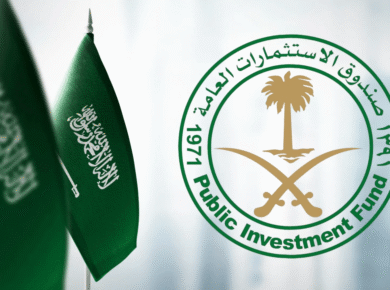Saudi Arabia Revises Budget Estimates for 2023 and Pre-Budget Statement for 2024

Saudi Arabia has adjusted its growth projections and is now anticipating a budget deficit for this year, instead of the earlier expected surplus, as indicated in a preliminary budget statement released by the Ministry of Finance. The largest economy in the Arab world expects the real gross domestic product (GDP) to expand by a modest 0.03 percent in 2023, a significant deviation from the previous forecast of 3.1 percent growth.
The report also reveals a revised expectation of a SAR 82 billion deficit for the year 2023, which contrasts with the previously projected SAR 16 billion surplus. Furthermore, for the fiscal year 2024, the Saudi government anticipates total revenues of SAR 1.172 trillion ($312.51 billion) and total expenditures of SAR 1.251 trillion. This is a departure from earlier predictions, which estimated revenue at SAR 1.130 trillion and expenditures at SAR 1.114 trillion for the same period.
The adjustment in these figures reflects Saudi Arabia’s efforts to adapt to evolving economic conditions, particularly in the global oil market. The country has notably decreased its oil production, explaining that this move is aimed at stabilizing the global oil market, which has been grappling with lower prices compared to the previous year’s average of $100 per barrel.
In terms of budget projections, the document foresees a budget deficit of 1.9 percent of GDP for 2024, followed by 1.6 percent of GDP in 2025 and 2.3 percent of GDP in 2026. These deficits are attributed to the government’s expansionary spending policies and conservative revenue estimates, which together result in “limited budget deficits” over the medium term.
On a more positive note, the report forecasts real GDP growth rates of 4.4 percent in 2024, 5.7 percent in 2025, and 5.1 percent in 2026. Saudi Arabia’s economy had experienced a substantial 8.7 percent growth in the previous year, driven by elevated oil prices, ultimately allowing it to achieve its first budget surplus in almost a decade.
Alrajhi Capital, a prominent financial entity, weighed in on these revised economic projections. The organization highlighted that the government’s increased spending is not solely driven by higher revenues but is also supported by increased debt levels. Their analysis for 2023 suggests that oil revenues could reach SAR 749 billion, with the rise attributed to Aramco’s recent hike in PLD (Petroleum, Chemicals, and Petrochemicals Investment Area) prices. Moreover, expectations for non-oil revenues have been revised upward to SAR 440 billion, compared to the earlier estimate of SAR 421 billion.
Alrajhi Capital emphasized that the acceleration of government spending, rising from SAR 1,114 billion to SAR 1,262 billion, is a strategic move that reflects the government’s commitment to achieving its Vision 2030 objectives. They believe that government spending will play a pivotal role in realizing these objectives.
In conclusion, Alrajhi Capital expressed confidence that the Saudi government will maintain healthy reserve levels, estimated at SAR 410 million as of 2Q2023. This will be achieved through increased non-oil revenues and higher leverage, supporting government spending and aligning with its strategic vision for economic growth and development.
Saudi Arabia’s ability to adapt its fiscal policies to evolving economic conditions demonstrates its commitment to achieving sustainable growth and development in line with its Vision 2030 goals.






Eftumm
stromectol usa – generic carbamazepine 400mg tegretol cost
December 31, 2024Ndwlga
order generic isotretinoin 10mg – decadron 0,5 mg uk linezolid 600 mg canada
January 18, 2025Nwfubu
amoxil over the counter – ipratropium 100mcg pills ipratropium 100mcg tablet
January 19, 2025Adzxgg
zithromax 500mg cheap – order bystolic 20mg without prescription bystolic order online
February 1, 2025Vcrqxj
prednisolone 20mg drug – buy omnacortil tablets progesterone over the counter
February 3, 2025Tccblh
generic lasix 40mg – piracetam 800 mg cheap buy generic betamethasone 20 gm
February 10, 2025Dedrue
augmentin online – augmentin buy online cymbalta us
February 15, 2025Umffxe
acticlate price – order glipizide generic buy glucotrol 5mg online
February 17, 2025Zegbfb
order semaglutide 14 mg sale – purchase cyproheptadine online buy cyproheptadine pills for sale
February 25, 2025Iftvuy
order tizanidine online – tizanidine over the counter buy generic microzide 25 mg
February 28, 2025Tjftrj
tadalafil 20mg usa – tadalafil usa sildenafil 50mg us
March 6, 2025Rougnl
viagra 100mg uk – tadalafil 40mg sale tadalafil online
March 8, 2025Rqjurc
buy atorvastatin generic – oral atorvastatin order lisinopril 10mg pill
March 15, 2025Edvmrz
buy cenforce 100mg – order metformin 500mg generic order glucophage 1000mg
March 17, 2025Oxrllr
oral atorvastatin 80mg – lipitor online zestril online
March 17, 2025Yhirsf
lipitor medication – order lipitor sale buy lisinopril 5mg
March 17, 2025Afymxr
omeprazole usa – order lopressor for sale buy generic atenolol 50mg
March 21, 2025Nniiqa
depo-medrol over the counter – order triamcinolone generic order triamcinolone 4mg generic
March 27, 2025Ygaoeb
desloratadine order online – loratadine 10mg uk dapoxetine 60mg canada
March 29, 2025Qezoww
cytotec usa – orlistat ca buy generic diltiazem
March 31, 2025Wdwqdi
zovirax buy online – order crestor 20mg generic order generic rosuvastatin
April 6, 2025Tkcaou
domperidone for sale – order sumycin 500mg pills cyclobenzaprine online order
April 8, 2025Ddugcp
buy inderal cheap – buy propranolol online buy generic methotrexate 2.5mg
April 17, 2025Niveey
order generic coumadin 2mg – cost medex losartan canada
April 20, 2025Lbhprs
buy levaquin 500mg generic – buy ranitidine without a prescription buy zantac without prescription
April 24, 2025Gtlrnx
order esomeprazole 40mg online – esomeprazole 40mg for sale sumatriptan cost
April 25, 2025Jtfmwn
buy mobic 15mg sale – cost meloxicam 15mg buy flomax paypal
April 30, 2025Ihvman
order zofran online – buy simvastatin medication zocor 20mg over the counter
May 17, 2025a376g
provigil without prescription modafinil 200mg canada oral modafinil modafinil 100mg oral purchase provigil generic cost provigil 100mg order modafinil
June 2, 2025mc1tx
can i get cheap clomiphene cheap clomid without rx where to get clomiphene tablets cost of cheap clomid without rx where to get clomid no prescription cost of generic clomiphene how to buy generic clomiphene pill
June 6, 2025cheap cialis nz
With thanks. Loads of erudition!
June 10, 2025buy cialis generic online
I am in truth happy to glitter at this blog posts which consists of tons of profitable facts, thanks object of providing such data.
June 10, 2025clindamycin and flagyl
The vividness in this piece is exceptional.
June 11, 2025can i take 4 flagyl pills at once
Thanks on putting this up. It’s evidently done.
June 11, 2025db5on
generic zithromax – flagyl 400mg over the counter metronidazole 200mg cost
June 13, 2025jawf5
azithromycin over the counter – ciprofloxacin over the counter buy metronidazole generic
June 13, 2025pzdqb
rybelsus uk – cyproheptadine 4 mg canada buy periactin 4 mg without prescription
June 14, 2025x618g
rybelsus 14mg for sale – buy semaglutide 14 mg online buy cyproheptadine 4 mg
June 14, 2025